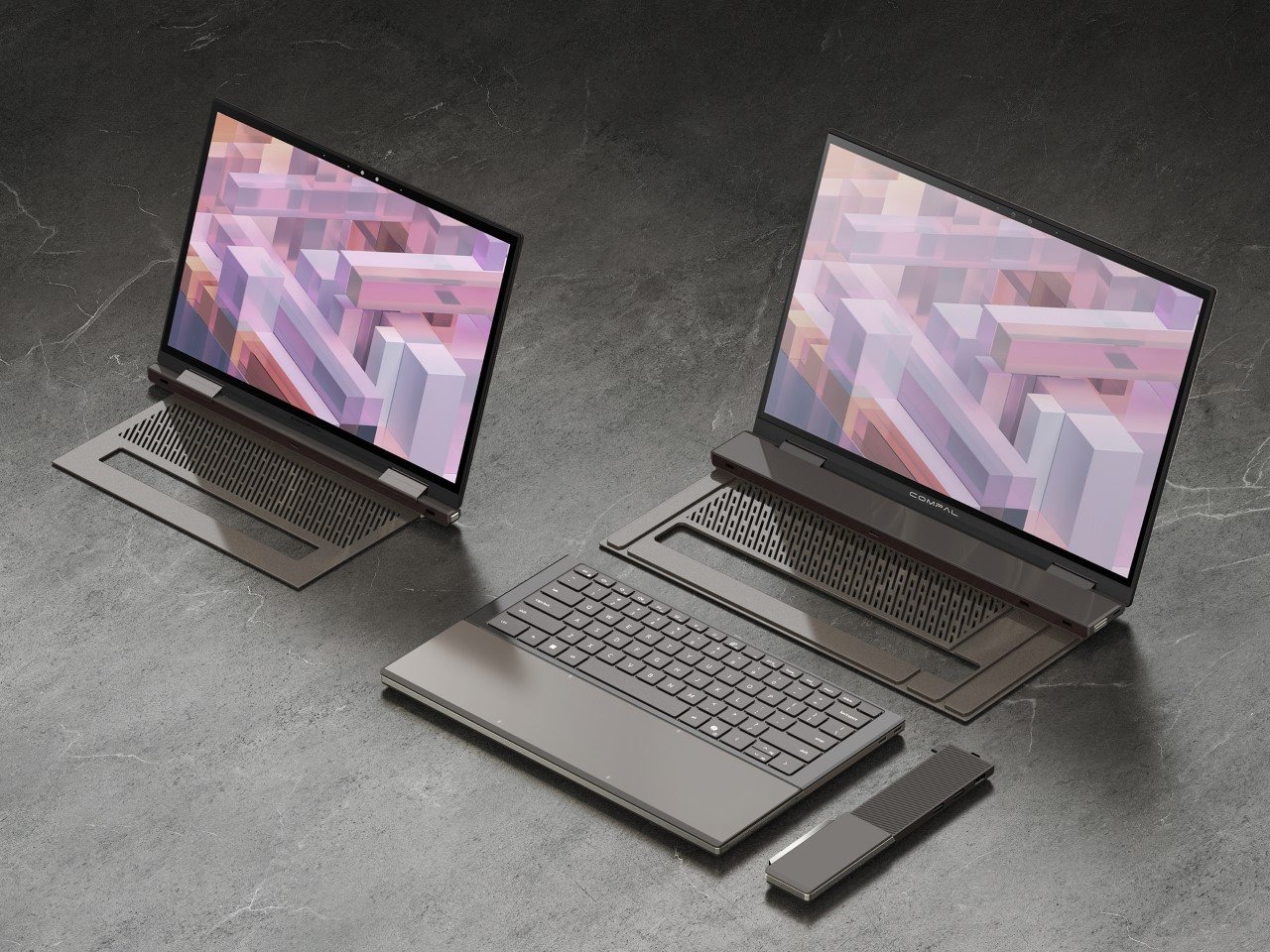The Compal Adapt X represents a bold reimagining of laptop architecture, challenging our acceptance of devices designed for obsolescence. This innovative concept, which earned an iF Design Award in 2025, approaches laptop design with a philosophy that prioritizes modularity, sustainability, and adaptability. Unlike traditional laptops that require complete replacement when components become outdated, the Adapt X allows users to swap individual parts like display panels, batteries, and port modules as easily as changing LEGO bricks. Let’s explore the five revolutionary concepts that make the Adapt X a potential game-changer in the personal computing industry.
Complete Modularity: The End of Disposable Computing

Traditional laptops force us into a wasteful cycle: when your processor becomes outdated, you discard an entire device—including perfectly functional screens, keyboards, and ports. The Adapt X breaks this pattern by making every component independently replaceable. Need a sharper display? Simply detach the current screen and attach a new one. Battery degrading? Slide it out and replace just that element. This approach recognizes a fundamental truth about technology—different components age at different rates. By allowing users to upgrade only what needs upgrading, the Adapt X extends the useful life of computing devices while reducing electronic waste. This isn’t just about convenience; it’s a completely different relationship with technology that treats devices as evolving tools rather than temporary possessions.
Transformative Design: A Laptop That Becomes a Desktop

The Adapt X goes beyond simple modularity by rethinking the fundamental form of a laptop. With a detachable keyboard and a built-in kickstand on the display, it transforms from a standard notebook into a makeshift desktop in seconds. This ingenious design accommodates different working styles throughout the day without requiring separate devices. When you’re on the move, it functions as a conventional laptop. When settled at a desk, detach the keyboard and position the screen at eye level for better ergonomics. This flexibility acknowledges that our computing needs change throughout the day, and our devices should adapt accordingly. As the article notes, this approach gives the Adapt X a “laptop shell with desktop behavior”—combining the portability of a notebook with the comfort and flexibility of a desktop setup.
Magnetic Assembly System: Intuitive Building Blocks

At the heart of the Adapt X’s modularity is an innovative magnetic assembly system that makes component swapping intuitive and accessible. Unlike complicated technical procedures requiring special tools and expertise, the magnetic connections allow modules to be attached and detached with minimal effort—similar to how we might snap together building blocks. This approach democratizes hardware modification, making it accessible to users without technical backgrounds. The design manages this functionality without sacrificing aesthetics; as the article points out, “despite all the moving parts, the final product doesn’t look like a Frankenstein experiment. It looks intentional. Clean. Almost minimal.” This balance of function and form demonstrates that modularity doesn’t have to come at the expense of design coherence.
Sustainability By Design: Built to Evolve, Not Expire

The Adapt X embodies sustainability not just as a marketing feature but as a core design principle. Its chassis utilizes recycled materials, and more importantly, its entire architecture is built around extending product lifespan. This represents a fundamental shift from the industry’s current approach. As the article notes, “You’re not being handed a recycled plastic laptop that’ll die in four years. You’re being handed a laptop that wants to live longer than your next phone contract.” By allowing continuous upgrades of individual components, the Adapt X could potentially remain functional for many more years than conventional laptops, substantially reducing electronic waste while keeping users current with technology advances. This approach aligns personal interest (saving money through partial upgrades) with environmental benefits (reducing waste)—a powerful combination for driving sustainable practices.
Industry Influence: A Template for Future Computing

While Compal is an Original Design Manufacturer (ODM) rather than a consumer-facing brand, the Adapt X’s significance extends beyond its specific implementation. It serves as a proof-of-concept and challenge to major laptop manufacturers like Dell, HP, and Lenovo—companies that could license and bring this design philosophy to market. The article describes it as “a soft nudge to the industry: stop building disposable rectangles. Start thinking like builders again.” By demonstrating that modular, sustainable design can be both functional and attractive, Compal is establishing a template that could influence the entire personal computing industry. While previous innovative designs haven’t always been adopted by mainstream manufacturers, the Adapt X’s practical approach to modularity addresses real consumer pain points and environmental concerns in a way that might finally break through industry resistance to more sustainable, user-serviceable designs.




























